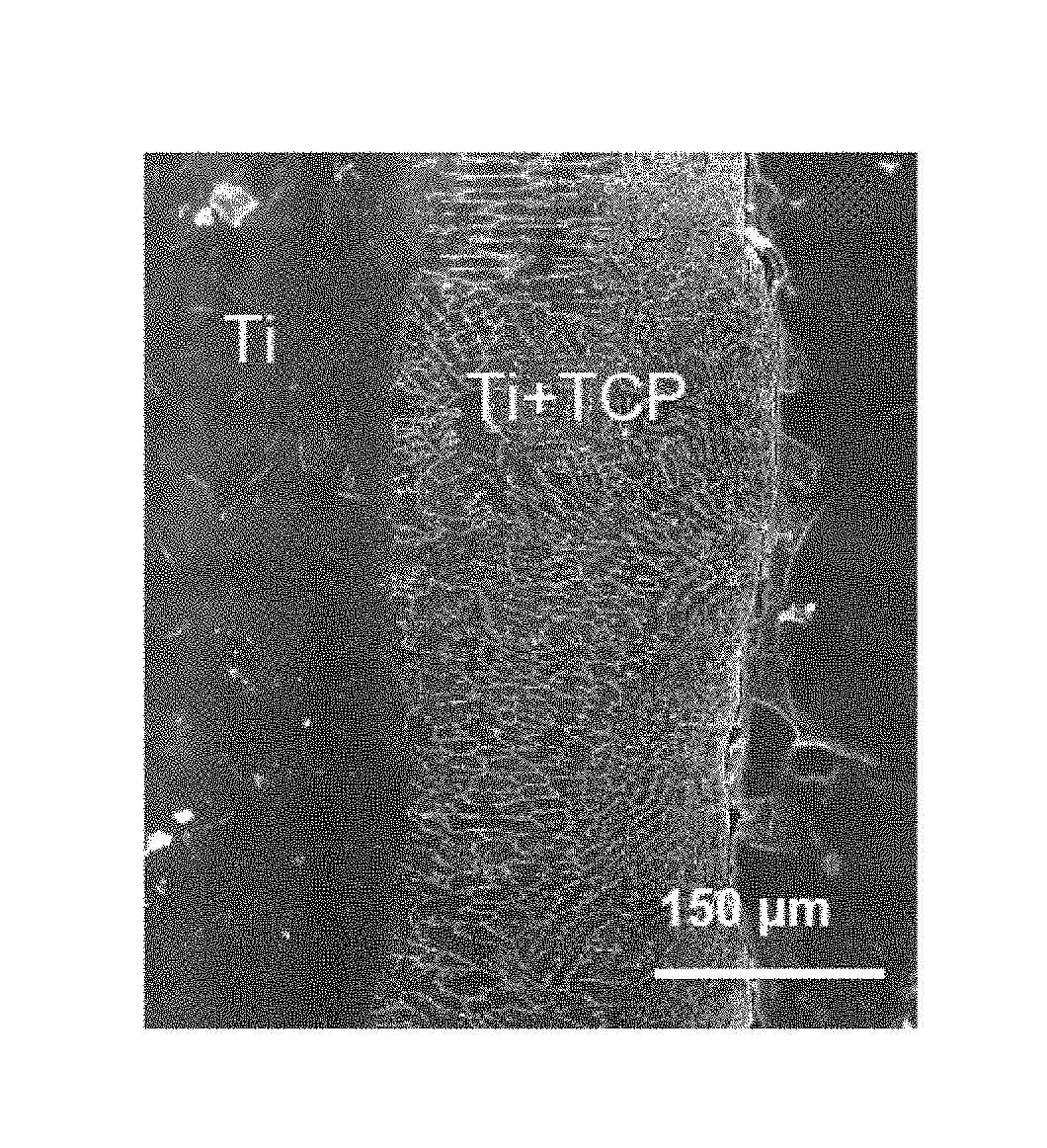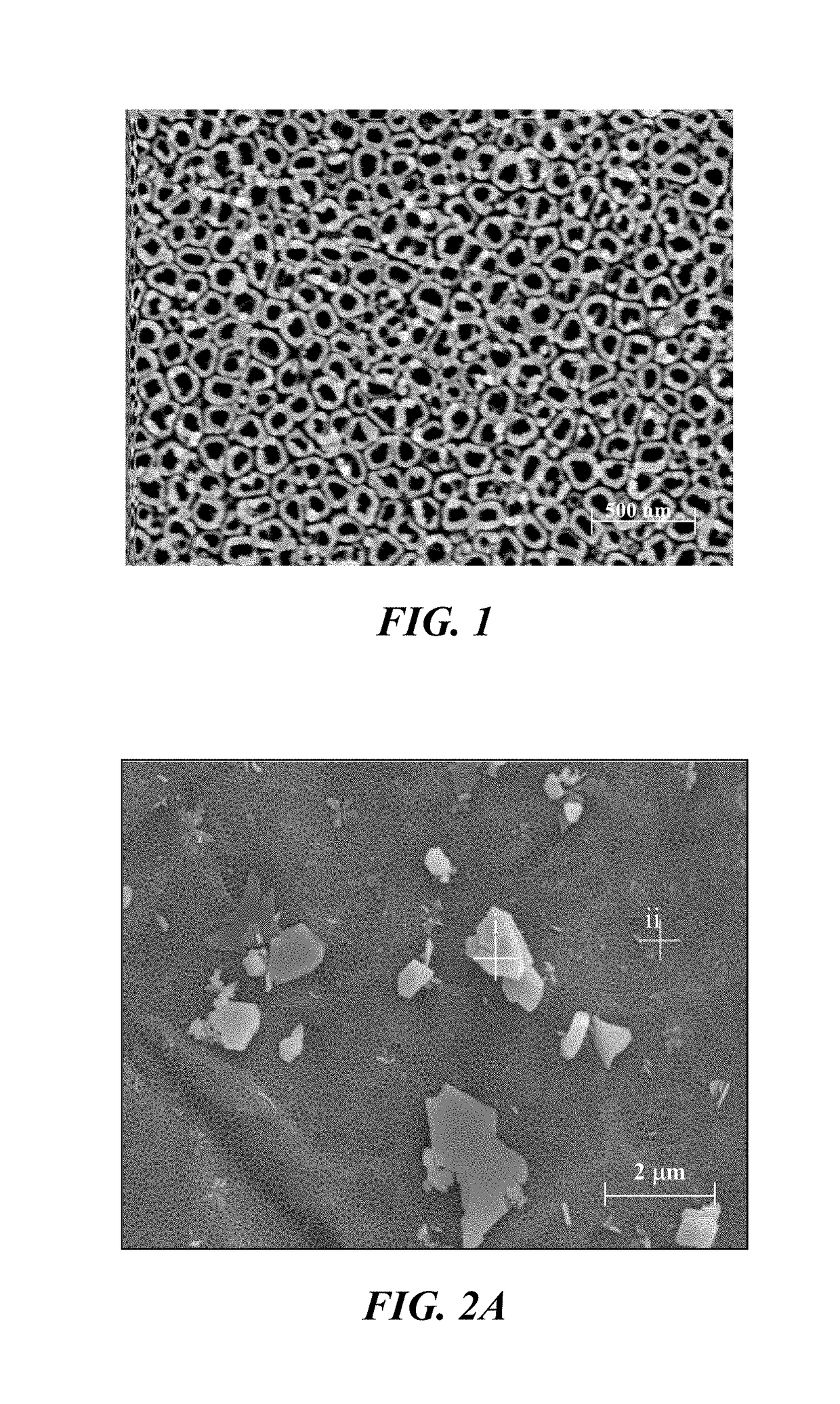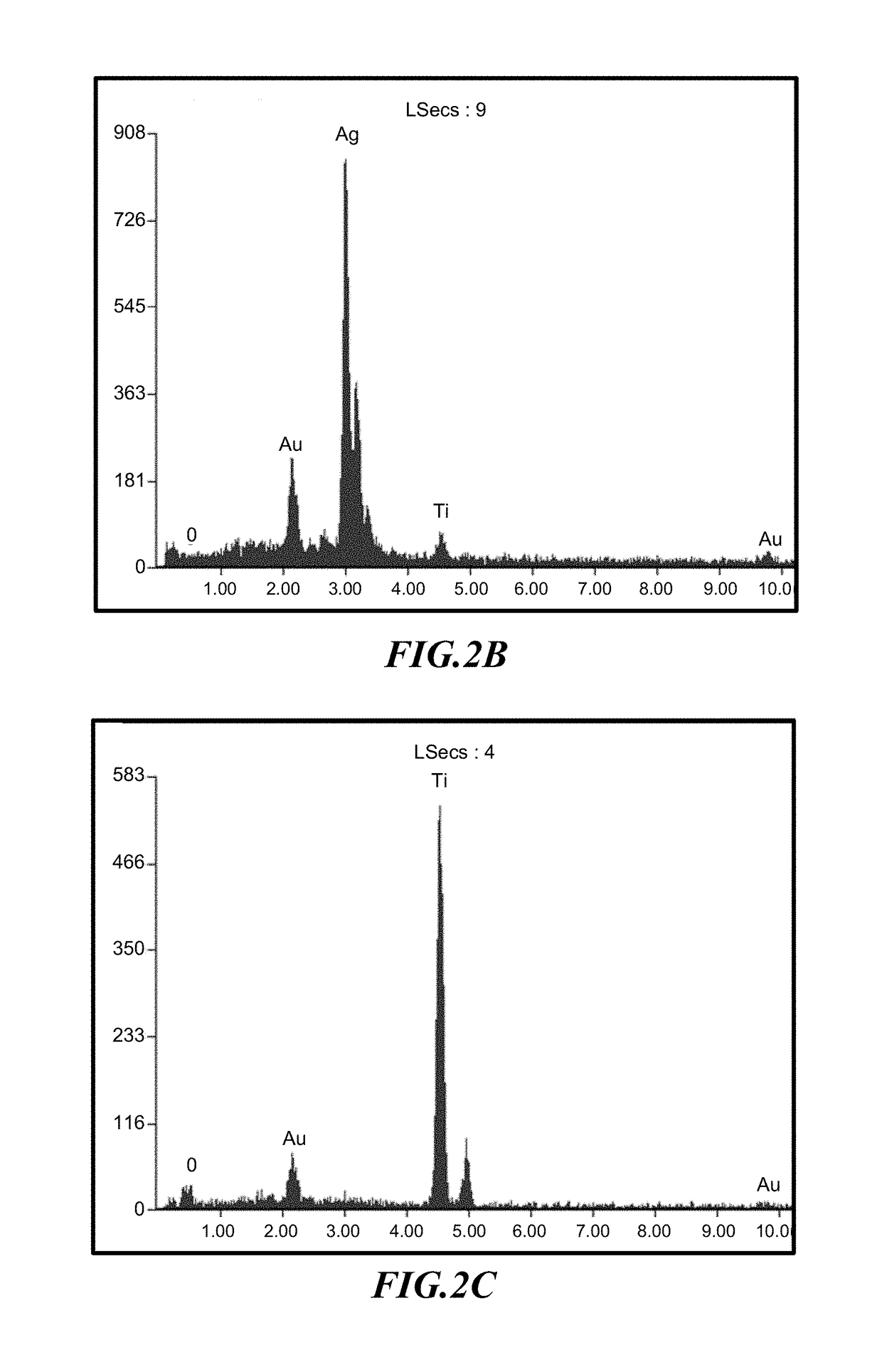Modified metal materials, surface modifications to improve cell interactions and antimicrobial properties, and methods for modifying metal surface properties
a technology of surface modification and metal materials, applied in the field of implantation of modified metal materials and methods for modifying the surface properties of metal substrates, can solve the problems of complex pattern of surface modification combinations and surface modifications
- Summary
- Abstract
- Description
- Claims
- Application Information
AI Technical Summary
Benefits of technology
Problems solved by technology
Method used
Image
Examples
example 1
[0046]Commercially pure titanium (cp-Ti, 99.6% pure) sheets of 0.5 mm thickness were used as a starting material. In this example, circular Ti discs were cut having a 12 mm diameter and the samples were abraded with silicon carbide paper in successive grades from 600 to 1200 grit (Leco Corporation, MI) followed by ultrasonic cleaning in distilled water and air drying at room temperature. The Ti discs were then polished with a cotton polishing cloth using a 1 μm alumina suspension. Following the polishing step, the samples were anodized in a two-electrode electrochemical anodization cell, with a titanium anode and platinum cathode, and in an electrolytic aqueous solution containing approximately 0.1 mole / L sodium fluoride and approximately 1.0 mole / L of sulfuric acid at a constant dc voltage of 20V for about 60 minutes. During anodization, the electrolytic solution was stirred with a magnetic stir bar. Surface and lateral topography of the modified Ti samples was visualized using a f...
example 2
[0051]In a specific example described herein for purposes of illustration and in accordance with an embodiment of the disclosure, six anodized samples were cleaned and anodized a second time with approximately 0.01 M silver nitrate solutions at 5V for about 2 minutes to produce silver deposited Ti samples. In this example, the silver deposited samples are denoted as Ag-1, Ag-2, Ag-3, Ag-4, Ag-5 and Ag-6. Anodized Ti samples without silver deposition (e.g., control samples) are referenced as C-1, C-2, C-3, C-4, C-5 and C-6. FIGS. 2A-C are, respectively, (A) a FESEM image of a silver coated nanoporous titanium oxide film surface, (B) a graphical representation of an EDS analysis of the elemental silver deposited on the Ti surface marked at (i) in FIG. 2A, and (C) a graphical representation of an EDS analysis of a nanoporous surface region having minimal silver deposition marked at (ii) in FIG. 2A in accordance with an embodiment of the disclosure. As shown in FIG. 2B, the samples anod...
example 3
[0053]In this example, cells were plated at a density of approximately 105 / cm2 in 100 mm tissue culture plates and cultured in McCoy's 5A medium (with L-glutamine, without phenol red and sodium bicarbonate) and supplemented with 5% fetal calf serum (FCS), 5% bovine calf serum (BCS), 2.2 gm / liter sodium carbonate, 100 mg / liter streptomycin, and 8 μg / ml Fungizone (Gibco™ Laboratories, Grand Island, N.Y.). Cells were maintained at 37° C. under an atmosphere of 5% CO2 and 95% air.
[0054]To examine the interactions between bone cells (e.g., OPC1 cells) and a nanoporous titania surface, anodized nanoporous TiO2 samples with and without a silver coating, as described in Examples 1 and 2 above, were autoclaved at about 121° C. for 45 minutes. Following the autoclaving step, OPC1 cells were seeded from the cultured plate to a top surface of the autoclaved samples in new culture plates. For example, OPC1 cells were cultured on a series of control nanoporous surfaces (C-series described above) ...
PUM
| Property | Measurement | Unit |
|---|---|---|
| Length | aaaaa | aaaaa |
| Length | aaaaa | aaaaa |
| Fraction | aaaaa | aaaaa |
Abstract
Description
Claims
Application Information
 Login to View More
Login to View More - R&D
- Intellectual Property
- Life Sciences
- Materials
- Tech Scout
- Unparalleled Data Quality
- Higher Quality Content
- 60% Fewer Hallucinations
Browse by: Latest US Patents, China's latest patents, Technical Efficacy Thesaurus, Application Domain, Technology Topic, Popular Technical Reports.
© 2025 PatSnap. All rights reserved.Legal|Privacy policy|Modern Slavery Act Transparency Statement|Sitemap|About US| Contact US: help@patsnap.com



